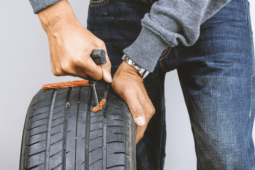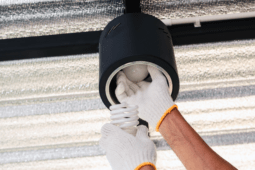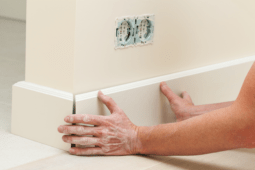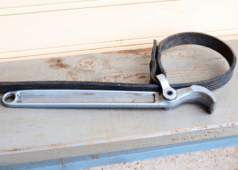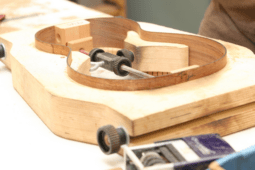DIY Tip: How to Quickly Add Fractions for Woodworking Projects… No Math Required

You know that old question that some stereotypical student always asks their math teacher? The one that's some variation on “When are we actually gonna use this in real life?” The answer, at least for arithmetic, geometry, and even a bit of trigonometry, is: woodworking. For sure. And plenty of other creative and DIY efforts. (That said, I've never actually used calculus after high school, but I know lots of jobs and creative pursuits require differentials and derivatives all the time. I'm just glad mine doesn't)
Anyone who spends time with a ruler or tape measure gets used to working in fractional inches, and most of us become pretty good with cutting things in half, or adding up thicknesses of different materials. But when your projects and design work start to involve numbers like 7 19/32″, things start to get a little difficult to calculate in your head.
So, here's an easy trick to quickly add complex fractions, with no paper, calculators, or headaches required.

Use two rulers. Or two tape measures. Or a framing square and a folding rule. Any two things with a readable scale will do. This is how it works: Let's say we want to add 3 11/16″ and 1 5/8″.

Find 3 11/16″ on ruler A. Then, place ruler B at 3 11/16″and find the second number, 1 5/8″, on ruler B. The adjacent graduation on ruler A is the sum.
See how easy that is? Looking at the photo above, the answer is 5 5/16″.

Done. No common denominators required.
This works for subtraction too. Just read the numbers in the opposite direction. If you do regularly work with complex fractions and are as right brained as I am, a shop calculator is a useful tool. This allows you to add fractions without converting them into decibels, as well as a heap of other tasks. Until we're all on the metric system (which will be a great day, indeed), it can be a lifesaver.
ManMade Recommended:

But! The two ruler technique totally works, and it's free. Who doesn't have a ruler and a tape measure lying around? Do this quick trick, and get back to building stuff.
Here it is again in simple photos:

Happy making!
Edited from a post originally published in May 2015.


